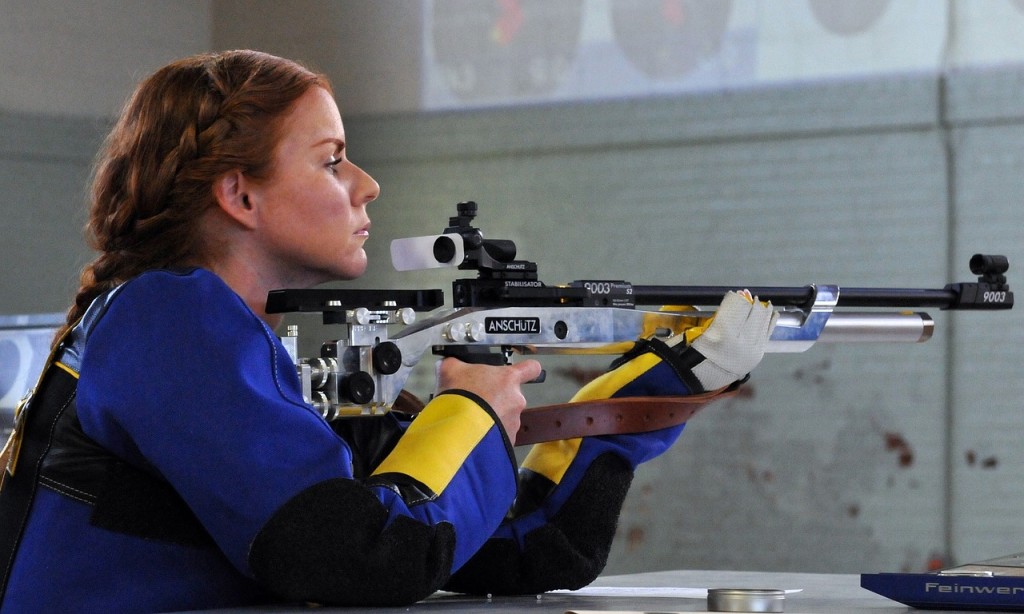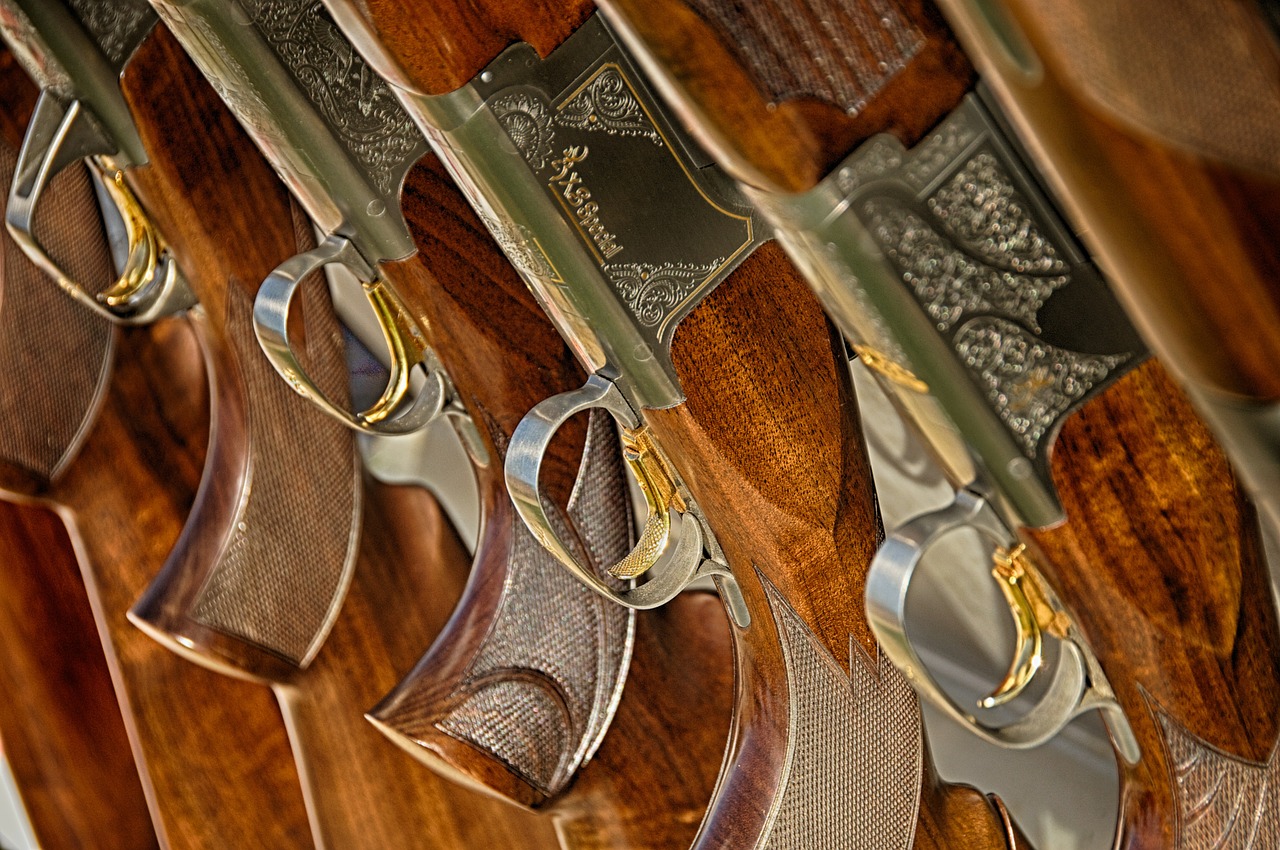How To Store Guns Safely In Your Home

On average, there is a press report of an unintentional shooting involving children every 36 hours. According to Everytown, a movement dedicated to ending gun violence, at least 100 children are killed every year in America in unintentional shootings.
That’s two kids each week.
“More than two-thirds of these tragedies could be avoided if gun owners stored their guns responsibly and prevented children from accessing them,” Everytown writes.
Kids Are Smarter Than You Think
Safe gun storage is more than just a matter of common sense.
It seems that “unrealistic perceptions of children’s abilities and behavior are common factors in these incidents.” That’s according to Safe Kids, a nonprofit organization in Pennsylvania that works to prevent childhood injuries.
“Parents frequently misperceive a child’s ability to gain access to and fire a gun, to distinguish between real and toy guns, to make good judgments about handling a gun, and to consistently follow gun safety rules,” Safe Kids writes. In fact, more than three-quarters of first- and second-graders asked said they knew where the guns at home were kept.
Georgians for Gun Safety is another nonprofit advocacy organization working to reduce death and injuries by firearms. The GGS webpage on safe gun ownership includes a number of information points worth reviewing. These include:
- Lock your gun; keep the key on you.
- Guns should be stored unloaded, uncocked and securely locked out of sight or reach.
- Check the chamber of a semi-automatic handgun for bullets when removing the magazine.
- Lock ammunition up separately from your gun.
- Keep ammunition away from moisture and heat.
- Do not store your gun or ammunition with valuables that are likely to be stolen.
- Do not store your gun under a bed, mattress or in an unlocked bedroom drawer.
There are various methods you can use to lock your gun, which are also covered by GGS. In addition to a trigger lock, which can be purchased for most guns, there are padlocks and cable locks.
The results are worth the effort. The Law Center to Prevent Gun Violence reports on a 2005 study that found “the practices of keeping firearms locked, unloaded, and storing ammunition in a locked location separate from firearms serve as a protective measure to reduce youth suicide and unintentional injury in homes with children and teenagers where guns are stored.”
The numbers tell a clear story: There was a 23-percent drop in unintentional firearm deaths over a four-year period when safety practices were implemented for one year. It is also noteworthy that suicides among older children dropped by more than eight percent just by making guns inaccessible in the home.

Who Has Access Determines Storage Needs
According to The Well Armed Woman, a site whose mission it is to to educate, empower and equip women gun owners, safe storage of guns very much depends on who is in the house.
Whether children are present or not, site owner Carrie Lightfoot argues that the safest place for your firearm is on your person. This is to allow for the quickest access possible; however, if you are not comfortable with that, the second best option is a biometric gun safe. These safes cannot be opened by even the most determined child, as they use your unique fingerprint to access the weapon inside. You could even store this safe in your new garage storage system for even more discretion!
While trigger locks and your own unsecured, accessible secret hiding place might be fine for adult-only homes, Lightfoot writes that you should not rely on hiding places with children in the house. “Such ‘secrets’ tend to be uncovered when you aren’t around, and many trigger locks can be taken off or otherwise defeated with a little effort,” she says.
A Look at Gun Safes
Gun storage safes range from high-tech, mobile safes that can be in full view of everyone in the house and still be secure to extra-large, fireproof safes built to protect larger collections of firearms.
The Gun Box
An example of this type of handgun storage is called The Gun Box. It fits one handgun in a kid- and sledgehammer-safe box that is made so tough it isn’t damaged when dropped from a height of 15 feet onto concrete or run over by a truck.
The Gun Box offers quick, unique access via its radio-frequency identification reader and/or its biometric reader. This means that only the authorized user’s fingerprint or a provided ring, label or wristband will open the box. Other safeguards include a motion sensor and alarm, with an alert that goes to your phone if the box is tampered with. The safe is GPS-enabled so that if it’s stolen it can be tracked in real time.
Gun Vault
There are multiple biometric gun safes at The Gun Vault, with a variety of sizes and mounting options. In addition to using a fingerprint scanner for identification of the user, these safes feature a “no-eyes” keypad, which allows the input of a numeric password in the dark.
The recently introduced DrawerVault Biometric fits and operates in most standard drawers. It is sized for handgun storage and can also be used for valuables such as passports and cash.
Sentry Safe
If you’re looking for a fire-secure safe large enough to fit a collection of as many as 51 guns, Sentry Safe has options. The safes are equipped with UL listed electronic locks, meaning that the locks meet requirements as set out by Underwriters Laboratories, an independent product safety certification organization.
These safes also use 14 extra large three-way locking bolts to reinforce protection against pry-attacks, as does the solid, 2.5 mm steel construction.
Browning
When even an extra-large safe just isn’t big enough, you can turn an entire room into secure storage with a vault door. Depending on its size, the room can double as a display area so you don’t have to move your collection of antique or rare guns to show them. This can also create a secure room in your home.
There are two door styles available. One has the appearance of a standard residential door. The other looks like what it is, a vault door designed to protect valuables.

Anchoring Large Safes
Traditional, large gun safes are a good solution for people who have gun collections and wish to store them securely. If you think there's no way you have room for such a thing, it turns out that a garage that's been properly cleaned will make a great place to install this new anchored safe! The goal remains the same, though, as Anne Wynter at SpareFoot found in her recent interview with Allen Forkner from Cannon Safe. “The most important thing is to keep your firearms out of the hands of people who shouldn’t have them,” Forkner told her.
Wynter also offers tips to prevent damage when storing your guns: She warns that wrapping your guns in a transport sleeve can cause moisture damage. Instead, the guns should be fully exposed to air and left unwrapped.
Gun safes not only keep children from accessing the firearms but can also guard against fire. And if you anchor your safe, you reinforce your overall safety and security by
- Making the safe harder to steal;
- Making it harder to break into;
- Protecting your home from damage, which can be caused when a heavy safe is shoved down a staircase or moved quickly without care;
- Keeping the safe from inadvertently tipping forward onto the owner.
It’s not just large gun safes that can be bolted to the floor. Smaller pistol safes, Ken Jorgustin at Modern Survival writes, “all have mounting holes at the bottom to enable fastening to the floor, or anything secure.” As with the large gun safes, anchoring the one-gun safe makes it burglar-proof.
Kevin Stevens, a gun owner and father of two, writes at NetWorx that he’s just getting started on his gun collection, and it’s something worth protecting. “Preventing the theft of firearms in an empty home is another reason to own a gun safe. Guns can be expensive things, and some folks’ collections can be quite extensive.”

A Look at Gun Cabinets
Much lighter than gun safes, gun cabinets are useful for securely storing gun collections. They lock, which keeps the weapons from getting into the hands of children. However, because of their light weight they can be toted away or broken into by thieves much more easily than safes.
“Also, a gun cabinet offers little help for when disaster strikes,” Joshua Gillem at Live Outdoors writes. “For example, if a fire consumes your house, the flimsy sheet metal that makes up your cabinet won’t resist flames for very long, if at all.”
If you’re looking strictly at cost, a gun cabinet is much cheaper than a safe. “If you’re handy, you even have the option of building one out of wood and turning it into a beautiful piece of furniture,” Gillem suggests.
Chris Baker at Lucky Gunner warns against hiding guns in plain sight using furniture designed with hidden gun compartments. Professional criminals are smarter than you, kids aren’t stupid, and most furniture isn’t fireproof, he says.
Baker also reminds gun collectors that their home insurance is limited when it comes to covering firearms. If you’ve got a firearms collection worth more than the average limit of $2,500, he advises that you purchase a rider.
One Final Word
“There are 27 states that penalize gun owners who allow their firearms to fall into the hands of a child, known as a ‘Child Access Prevention,’ or CAP laws,” writes Alex Yablon at The Trace. “While these laws do not require gun owners to stow their weapons in a particular way, they strongly encourage safe storage.”
This commonsense approach is echoed by the National Rifle Association in its own gun safety rules, where it states that guns must be stored so they are not accessible to unauthorized persons.
It even adds the following proviso: “However, mechanical locking devices, like the mechanical safeties built into guns, can fail and should not be used as a substitute for safe gun handling and the observance of all gun safety rules.”
Images by:
skeeze, Stephen Z, Michael Glasgow, Norm Bosworth
